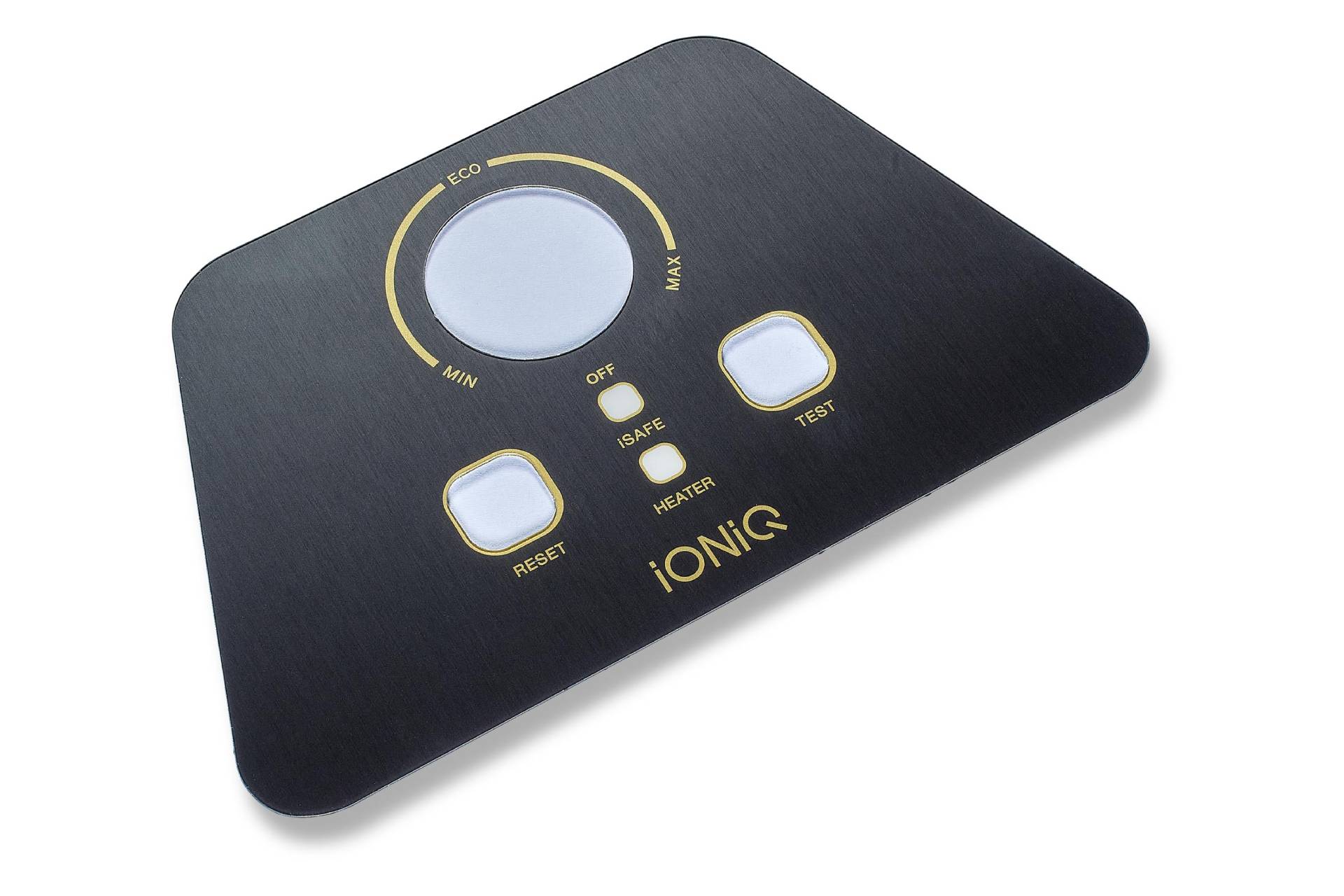Plastic Nameplates and OSHA Compliance: What You Should Know
Comprehending Exactly How Plastic Nameplates Work: Insights Into Their Capability and Advantages
Plastic nameplates are vital devices for recognition and interaction in numerous settings. Created from long lasting materials like acrylic and PVC, they provide both strength and aesthetic charm. Numerous printing strategies improve their presence and branding prospective. Recognizing their capability exposes not just their sensible applications but additionally the advantages they bring to companies. As sectors advance, the role of plastic nameplates might move, triggering a closer take a look at their recurring significance and development.
The Materials Behind Plastic Nameplates
Plastic nameplates are crafted from a selection of products, each chosen for its special residential properties and suitability for different applications. Typical materials consist of acrylic, polycarbonate, and PVC, each offering unique advantages. Acrylic is preferred for its clarity and lightweight nature, making it perfect for interior use and screen purposes. Polycarbonate, known for its high effect resistance, is frequently picked for environments where longevity is vital (Plastic Nameplates). PVC, on the various other hand, provides an economical solution with decent weather resistance, ideal for exterior applications.Additionally, the choice of material can affect elements such as color retention, simplicity of printing, and general visual appeal. This selection procedure assurances that the final item fulfills certain needs, whether for branding, identification, or attractive purposes. Recognizing the homes of these products assists in making notified choices when picking plastic nameplates for different needs
Production Processes of Plastic Nameplates
The manufacturing processes of plastic nameplates incorporate several crucial actions that guarantee quality and toughness. Secret elements consist of product choice techniques, various printing methods, and completing and finish choices. Comprehending these elements is necessary for creating effective and visually pleasing nameplates.
Product Choice Methods
Choosing the best materials for producing plastic nameplates is important for making sure sturdiness, visual allure, and functionality. Different plastic kinds are available, each offering unique homes matched for various applications. Polyvinyl chloride (PVC) is preferred for its price and resistance to ecological aspects, making it excellent for outdoor use. Acrylonitrile butadiene styrene (ABDOMINAL) offers boosted effect resistance and is often chosen for its remarkable stamina and convenience. Furthermore, polycarbonate is preferred for applications needing openness and high influence resistance. The choice procedure involves considering variables such as the meant usage, ecological direct exposure, and preferred visual top qualities. Eventually, mindful material choice substantially influences the efficiency and longevity of plastic nameplates, satisfying varied market demands.
Printing Approaches Overview
Material selection lays the foundation for the subsequent printing approaches utilized in producing plastic nameplates. Various techniques, such as display printing, digital printing, and pad printing, are employed to accomplish resilient surfaces and top quality styles. Display printing is preferred for its capability to produce lively colors and appropriates for big runs. Digital printing, on the other hand, provides flexibility and accuracy, making it optimal for smaller orders with variable information or complex layouts. Pad printing permits the transfer of photos onto uneven surfaces, accommodating intricate forms. Each printing method adds distinctively to the end product's look and long life, making certain that the nameplates properly convey the designated message and stand up to ecological elements.
Finishing and Coating Options
Ending up and layer choices play a vital duty in enhancing the durability and aesthetic allure of plastic nameplates. Numerous strategies, such as UV finish, provide a protective layer that stands up to scrapes and fading, substantially prolonging the product's life expectancy. In addition, laminating options can offer a shiny or matte finish, permitting modification to match branding demands. Electroplating and anodizing are also prominent techniques, including a metallic shine while enhancing rust resistance. These coverings not only enhance appearance but likewise add to the nameplate's performance by safeguarding versus environmental variables. Furthermore, specialized surfaces, such as anti-graffiti finishes, assurance that nameplates preserve their clarity and aesthetic allure in tough conditions. As a result, the right ending up and finishing choices can substantially boost the overall worth of plastic nameplates.
Style Choices for Modification
While exploring design alternatives for personalization, one discovers a broad variety of possibilities that can enhance the functional and aesthetic appeal of plastic nameplates. Color selection is a primary factor to consider, as lively hues can stand out while neutral shades promote professionalism. Different font style options and sizes furthermore individualize nameplates, making sure legibility and alignment with brand identity.Incorporating logos or photos includes an unique touch, enhancing organizational branding. Moreover, shape customization enables for unique styles, varying from typical rectangles to extra elaborate kinds, accommodating particular themes or environments.Textures such as matte or shiny finishes can additionally affect the general look, supplying a tactile dimension. In enhancement, the combination of ornamental elements like histories or borders improves aesthetic interest. These customization alternatives jointly enable organizations to create plastic nameplates that properly communicate their identity and message while satisfying useful demands.

Toughness and Long Life of Plastic Nameplates
Although several elements influence the resilience of plastic nameplates, the option of material and production processes plays a substantial duty in their durability. Top quality plastics, such as polycarbonate and acrylic, are typically picked for their inherent resistance to weather, effect, and uv radiation. These products can withstand rough environmental problems without considerable degradation, assuring that nameplates remain intact over time.Furthermore, advanced manufacturing techniques, such as shot molding and laser engraving, add to the toughness of plastic nameplates. These processes produce specific and sturdy engravings that stand up to fading and wear. In addition, protective coatings may be applied to enhance resistance to scrapes and chemicals, additionally prolonging their lifespan.Ultimately, the read this mix of high quality materials and reliable manufacturing procedures assures that plastic nameplates keep their functionality and look for years, making them a dependable option for different applications.
Applications Across Different Industries
Plastic nameplates serve a variety of essential features throughout various sectors. They are generally used for industrial tools recognition, guaranteeing clear labeling for security and operational efficiency. In addition, they supply effective workplace signs options and play an important function in safety and compliance markings, highlighting their adaptability and relevance in varied environments.
Industrial Devices Recognition
Efficient industrial tools recognition is crucial across various markets, as it ensures safety, performance, and conformity with regulative requirements. Plastic nameplates work as an important device in this process, providing clear and resilient recognition for machinery and tools. Industries such as manufacturing, building, and power utilize these nameplates to show essential details, including running guidelines, risk cautions, and maintenance schedules. Their resilience to extreme atmospheres warranties that necessary information remains available, decreasing the threat of mishaps and functional downtime. Furthermore, customizable functions allow for branding and certain identifying needs, making plastic nameplates flexible throughout applications. Overall, reliable tools recognition with plastic nameplates fosters a much safer office while improving productivity in varied industrial setups.
Workplace Signage Solutions

In various industries, the significance of clear communication extends beyond industrial tools to workplace environments where signs plays an important function. Plastic nameplates function as reliable workplace signs solutions, offering important details such as worker names, work titles, and departmental designations. These nameplates boost expertise and promote an inviting ambience, assisting both team and visitors in navigating the workspace. Additionally, they provide customization alternatives, allowing organizations to align signs with branding and aesthetic choices. In setups like health centers, universities, and corporate offices, durable and clear signs guarantees reliable interaction and adds to organizational effectiveness. Ultimately, making use of plastic nameplates in workplace atmospheres not just boosts clarity yet additionally promotes a natural and orderly work area.
Security and Compliance Markings
While several services prioritize looks and branding in their signs, compliance and safety markings are equally vital across numerous industries. These markings offer as essential devices for interaction, assuring that customers and workers understand prospective risks, safety protocols, and regulative requirements. In production, for example, plastic nameplates frequently show cautioning labels and usage directions to alleviate threats. In health care, compliance signs informs workers concerning hygiene techniques and equipment usage, thereby promoting a secure atmosphere. Furthermore, the toughness of try this site plastic nameplates makes them ideal for different settings, standing up to deterioration from ecological elements. Generally, security and conformity markings enhance functional effectiveness, promote wellness, and assurance adherence to market standards, making them essential in modern-day workplaces.
Benefits of Utilizing Plastic Nameplates
Numerous benefits make plastic nameplates an enticing selection for organizations and companies. One key advantage is their resilience; plastic nameplates are immune to fading, dampness, and different environmental elements, making sure durability in diverse settings. In addition, they are light-weight, making them simple to install and transfer as needed.Cost-effectiveness is an additional substantial advantage. Plastic nameplates normally require lower manufacturing costs compared to metal or wood options, permitting organizations to maintain spending plans while accomplishing expert branding. Their flexibility likewise sticks out, as they can be tailored in numerous forms, dimensions, and colors to match branding requirements.Furthermore, plastic nameplates can be easily printed with high-resolution layouts, advertising clear presence and efficient communication. Finally, they are usually made from recyclable materials, straightening with ecologically conscious methods. These mixed benefits enhance the capability and allure of plastic nameplates for a variety of applications in different industries.

Tips for Picking the Right Nameplate for Your Requirements
Selecting the appropriate nameplate can considerably boost an organization's branding and interaction efforts. To make an informed choice, one need to initially take into consideration the material. Plastic nameplates supply durability and convenience, making them ideal for various environments. Next off, examine the layout elements, consisting of size, color, and font style, guaranteeing they line up with the organization's branding guidelines.Additionally, it is important to analyze the designated usage of the nameplate. As an example, if it needs to endure outdoor problems, choosing UV-resistant alternatives is advisable. Personalization is an additional crucial aspect; customized nameplates can show originality and professionalism.Lastly, budget factors to consider must not be forgotten. Contrasting prices throughout various providers while factoring in top quality will aid in discovering an appropriate solution. By taking these aspects right into account, organizations can select a nameplate that efficiently communicates their identification and objective.
Often Asked Questions
Can Plastic Nameplates Be Recycled After Usage?
Plastic nameplates can be reused, depending upon the type of plastic made use of and neighborhood recycling centers. Proper disposal and reusing techniques contribute to environmental sustainability, motivating the reduction of plastic waste in landfills.
How Do I Tidy and Maintain My Plastic Nameplate?

Are Plastic Nameplates Waterproof or Water-Resistant?
Plastic nameplates generally exhibit water-resistant homes, securing them from minor wetness direct exposure. Nevertheless, prolonged submersion or rough problems might jeopardize their honesty. Plastic Nameplates. Customers must think about particular products and layers for improved waterproof capabilities when selecting nameplates
What Is the Typical Life-span of a Plastic Nameplate?
The typical life-span of a plastic nameplate typically ranges from five to 10 years, relying on elements such as environmental exposure, material quality, and maintenance. Routine care can extend its functionality and look significantly.
Can I Order a Nameplate in a Certain Forming?
Customized shape alternatives for nameplates are frequently readily available with numerous producers. Clients can request details designs, making certain that the nameplate fulfills their useful and visual needs while preserving longevity and quality throughout its lifespan. Material selection lays the foundation for the succeeding printing methods used in producing plastic nameplates. Lots of aspects affect the longevity of plastic nameplates, the selection of product and production processes plays a substantial duty in their longevity. These products can endure harsh ecological conditions without substantial deterioration, ensuring that nameplates continue to be intact resource over time.Furthermore, advanced manufacturing strategies, such as shot molding and laser inscription, add to the robustness of plastic nameplates. Plastic nameplates can be reused, depending on the kind of plastic used and local reusing facilities. The typical life expectancy of a plastic nameplate typically varies from five to 10 years, depending on aspects such as environmental direct exposure, worldly quality, and upkeep.